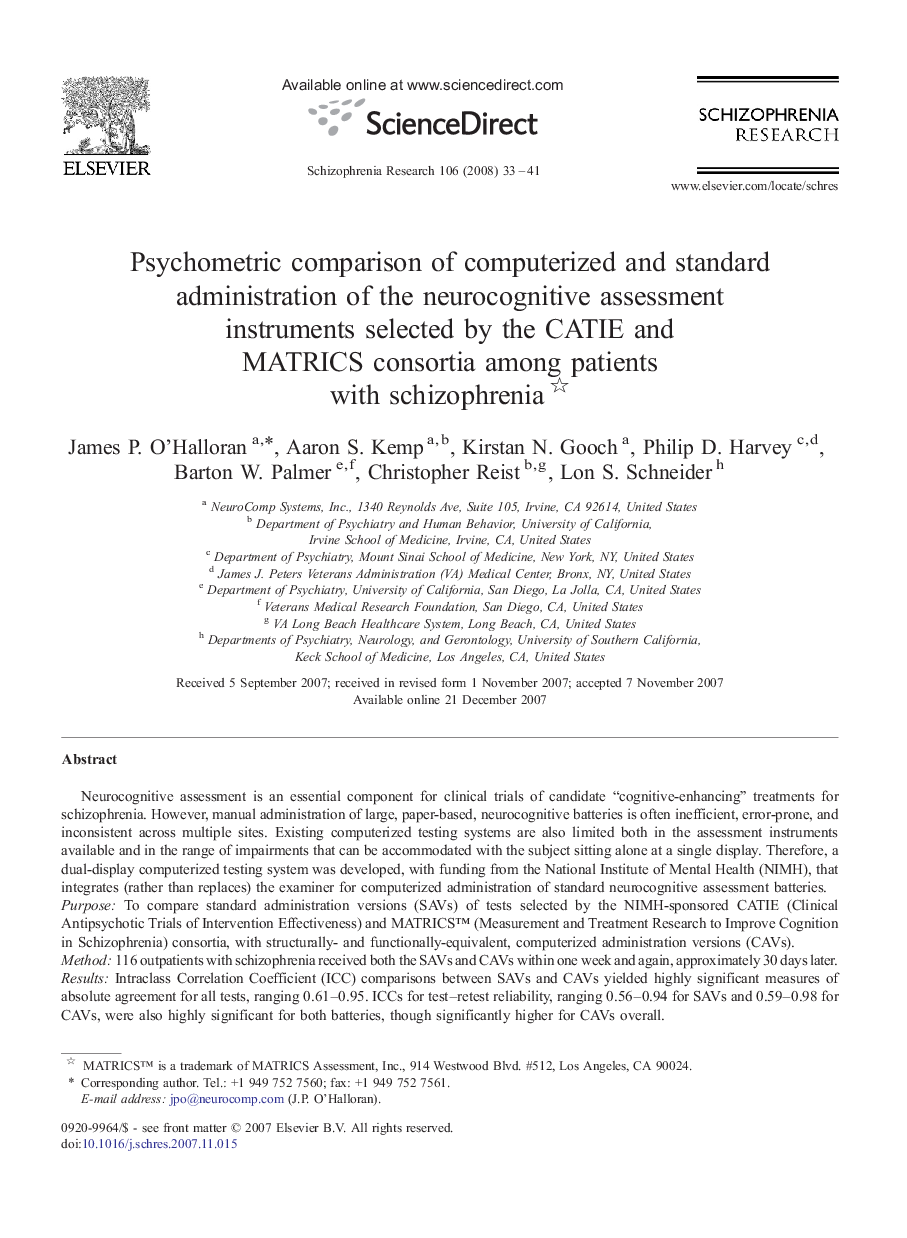| Article ID | Journal | Published Year | Pages | File Type |
|---|---|---|---|---|
| 341870 | Schizophrenia Research | 2008 | 9 Pages |
Neurocognitive assessment is an essential component for clinical trials of candidate “cognitive-enhancing” treatments for schizophrenia. However, manual administration of large, paper-based, neurocognitive batteries is often inefficient, error-prone, and inconsistent across multiple sites. Existing computerized testing systems are also limited both in the assessment instruments available and in the range of impairments that can be accommodated with the subject sitting alone at a single display. Therefore, a dual-display computerized testing system was developed, with funding from the National Institute of Mental Health (NIMH), that integrates (rather than replaces) the examiner for computerized administration of standard neurocognitive assessment batteries.PurposeTo compare standard administration versions (SAVs) of tests selected by the NIMH-sponsored CATIE (Clinical Antipsychotic Trials of Intervention Effectiveness) and MATRICS™ (Measurement and Treatment Research to Improve Cognition in Schizophrenia) consortia, with structurally- and functionally-equivalent, computerized administration versions (CAVs).Method116 outpatients with schizophrenia received both the SAVs and CAVs within one week and again, approximately 30 days later.ResultsIntraclass Correlation Coefficient (ICC) comparisons between SAVs and CAVs yielded highly significant measures of absolute agreement for all tests, ranging 0.61–0.95. ICCs for test–retest reliability, ranging 0.56–0.94 for SAVs and 0.59–0.98 for CAVs, were also highly significant for both batteries, though significantly higher for CAVs overall.ConclusionsThe CAVs of the neurocognitive assessment instruments selected by the CATIE and MATRICS™ consortia are substantially equivalent to antecedent SAVs. Importantly, the increased reliability afforded by computerization highlight the potential for increasing power, thereby decreasing sample size requirements, for clinical evaluations of putative “cognitive-enhancing” treatments.
